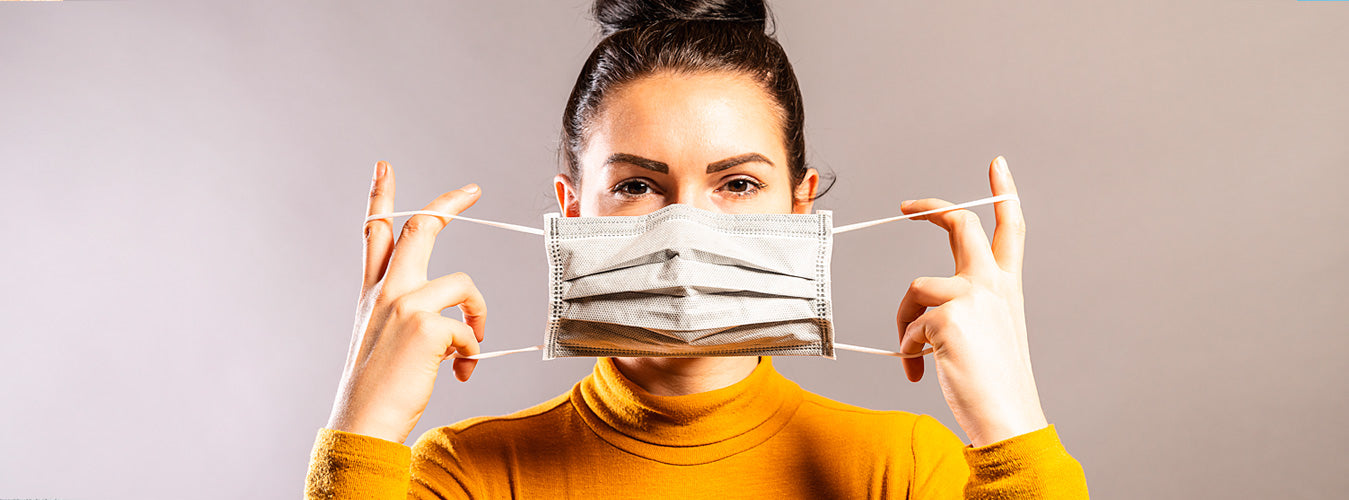
How do masks keep people safe?
COVID-19 spreads person-to-person primarily by respiratory droplets, becoming airborne when an individual sneezes, coughs, sings, or talks. By wearing a face mask, you keep your droplets to yourself. You might not have any outward symptoms of COVID, so it is essential to have your mask on.
A face covering, made with the suitable material and worn correctly, will protect the person wearing it and keep other people's droplets from entering the wearer's nose or mouth. When everyone wears a mask, that's what protects everyone. Keep a mask in your pocket whenever you go out.
Two things you can do to protect yourself and others when wearing a mask are:
- Pick a mask with multiple layers to keep your respiratory droplets in and others out.
- A mask made with layers will stop more respiratory droplets from infiltrating your mask or escaping from your mask if you are sick. It is necessary to ensure that your mask fits snugly against your face. Gaps can let air with respiratory droplets leak in and out around the edges of the mask. (1)

TYPES OF MASKS AND RESPIRATORS
Face shields – Because the benefit of wearing a face shield remains unknown, the CDC has indicated that they are not a suitable substitute for masks. However, they can be used in conjunction with a mask, such as when in close contact with people. In cases where face shields are used without masks, the CDC advises that only face shields that wrap around the chin, nose, and sides of the face be selected. Single-use shields should be disposed of after use, and reusable shields should be promptly disinfected.
Cloth face coverings – Often cloth face masks are made from tightly woven (but breathable) cotton or polyester blend material. These cover the mouth, nose, and chin, are not considered PPE but can help reduce the spread of COVID-19 and other airborne viruses. Cloth face masks may or may not have filter inserts and are usually sold with fashion fabrics options or decorations such as sequins, etc. A quality cloth mask should block the light when held up to a light source and have a wire to ensure a custom fit around the nose. It should not have any exhalation valves or vents, including options for drinking straws.
Disposable masks – Intended for healthcare and laboratory use, these masks are considered personal protective equipment (PPE.) Disposable masks are made of multiple layers of non-woven disposable material, contain a nose wire, and vary in thickness. These are intended for low-risk, low-contact environments but do not provide respiratory protection due to the looser fit.
Surgical masks – Surgical masks are similar to disposable masks and likewise are considered PPE products. The FDA clears them for use against large droplets, splashes, and sprays of body or other hazardous fluids. Surgical masks are typically made of multiple layers of non-woven disposable material. However, they do not provide respiratory protection such as an N95 does. They are single-use and should be discarded after use. KN95 masks – KN95 masks are essentially modified surgical masks that have greater comfort for users. They are often mistaken for a N95 respirator but they are not the same as a KN95 mask doesn’t provide respiratory protection. Similar to both disposable and surgical masks, KN95 masks consist of multiple layers of non-woven material, but the difference being they are molded into a form resembling a N95 respirator. KN95 masks are often held to the face with elastic ear loops, stapled to the mask.
N95 mask or N95 respirator – Whether called a mask or respirator, the N95 filters at least 95% of airborne particles based upon manufacturing standards. It is a mask that requires users to be sized before purchase to ensure a proper fit and seal. As the COVID-19 pandemic grew, the N95 masks were to be worn only by healthcare professionals.
The N95 mask and the N95 respirator are among the most counterfeit products (LINKS TO ARTICLE ON COUNTERFEIT PRODUCTS), so buyers must be cautious when selecting a PPE supplier. (LINKS TO ARTICLE ON SELECTING A PPE SUPPLIER). The N95 respirator protects from both fluid hazards (e.g., sprays, splashes, etc.) as well as airborne particles.
Why do mask regulations keep evolving?
In the beginning, researchers and scientists did not know how necessary mask-wearing would be among the public. Later, they learned that wearing masks was an effective way to help prevent the spread of this coronavirus. Also, masks were initially in short supply. At the time, it made sense to ensure that those who were at the highest risk of infection, such as medical caregivers and first responders, had an adequate supply of professional masks to protect them as they cared for patients. Experts are likely to revise mask guidelines as more people in the community are protected and/or as new variants arise. If another wave of infections comes, they'll recommend mask-wearing again.
When a completely new virus-like SARS-CoV-2 shows up in humans, recommendations frequently change as scientists learn more about how the virus behaves. (2)
